Hotel Interior Design in Bangladesh
In Bangladesh, the interior design of hotel restaurants plays a crucial role in creating an inviting and memorable dining experience for guests. My design philosophy emphasizes a harmonious blend of aesthetics, functionality, and local culture. By utilizing rich fabrics, traditional motifs, and contemporary elements, I strive to craft spaces that reflect the unique identity of each hotel while providing comfort and elegance. Attention to detail, such as lighting and layout, enhances the ambiance, ensuring that diners feel welcomed and engaged. Ultimately, my goal is to elevate the dining experience, making every meal not just about food, but also about the atmosphere and overall enjoyment.
Importance of Hotel Interior Design in Bangladesh
When I first started diving into the world of hotel interior design, I quickly realized just how pivotal a well-designed space can be for a dining establishment. Think about it: the moment a guest walks into a hotel they are greeted not just by the aromas wafting from the kitchen but also by the environment that surrounds them. An effective interior design:
- Enhances Guest Experience: It sets the mood and influences how customers perceive the food and service.
- Reflects Brand Identity: Well-thought-out design mirrors the Hotel’s branding, contributing to a cohesive guest experience across the entire hotel.
- Encourages Return Visits: A warm and inviting atmosphere can entice guests to return, making them more likely to recommend the Hotel to others.
I’ve often witnessed how an exquisite ambiance can elevate a simple meal into a remarkable dining experience.

Overview of Hotel Interior Design Service Industry in Bangladesh
In Bangladesh, the hotel interior design service industry has blossomed over the past decade, driven by both local and international tourism. With an increasing number of hotels looking to differentiate themselves, insightful interior design has become crucial. Here are some trends that I’ve observed in the Bangladeshi market:
- Cultural Fusion: Many Hotel blend traditional Bangladeshi elements with modern trends, making the ambiance not only visually appealing but culturally resonant.
- Sustainable Design: A growing emphasis on sustainability means many designers are utilizing eco-friendly materials and practices, catering to the environmentally-conscious traveler.
- Technological Integration: Incorporating advanced technology, like smart lighting and ambience controls, allows Hotels to adapt the atmosphere according to the time of day or special events.
As a result, interior designers like myself are continually inspired to create unique spaces that leave a lasting impression on guests. This thriving industry in Bangladesh presents exciting opportunities for innovation and creativity, launching us into the future of dining experiences.
Elements of Hotel Interior Design
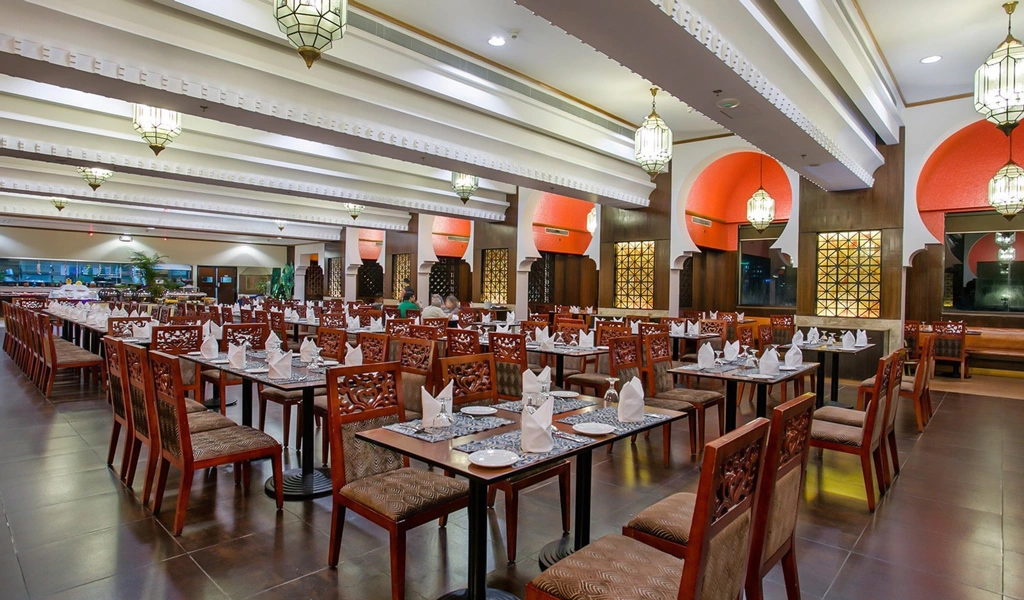
Furniture and Fixtures: As We delve deeper into the world of hotel interior design, one element that always catches my attention is furniture and fixtures. These are not just functional items; they play a crucial role in creating an inviting atmosphere. When selecting furniture, I focus on several key factors:
- Comfort: The seating must be plush enough for guests to enjoy lengthy dining experiences without discomfort. Once, I designed a cozy Italian Hotel that incorporated soft leather banquettes paired with elegant wooden chairs—ensuring comfort without sacrificing style.
- Style Coordination: Furniture should harmonize with the overall theme. For instance, if a Hotel features nautical themes, rustic wooden tables and metal accents evoke the perfect seaside vibe.
- Versatility: Adaptable furniture allows for flexible seating arrangements for large groups or intimate settings. Round tables can be inviting for families while rectangular ones work well for couples.
Fixtures, such as unique light fixtures or statement art pieces, enhance the visual appeal and add character to the space. I often recommend incorporating custom-made fixtures that reflect the Hotel’s vision; this can be a game-changer.
Lighting and Ambiance: As any interior designer knows, lighting is the magic wand that transforms a space. The right lighting can elevate the dining experience dramatically. Here are some elements I always consider when planning lighting:
- Layered Lighting: A combination of ambient, task, and accent lighting provides depth. Bright lights are perfect for bustling breakfast services, whereas softer, dimmer lights create a romantic atmosphere for evening meals.
- Color Temperature: The color of the light can influence emotions. Warm tones often evoke feelings of comfort and relaxation, while cooler tones may energize the space—ideal for vibrant brunch crowds.
- Highlighting Architectural Features: Using spotlights to accentuate design elements like an exquisite ceiling or a breathtaking artwork can draw guests’ eyes to the Hotel’s unique traits.
Having transformed a café’s lighting from stark to inviting with carefully placed pendant lights, I’ve seen firsthand how lighting can completely reshape an ambiance. Achieving the right balance between furniture, fixtures, and lighting is vital, creating an environment where guests feel comfortable and valued.

Creating a Welcoming Atmosphere:
- Color Schemes and Patterns
One of the most exciting aspects of hotel interior design is the way color schemes and patterns can dramatically shape the atmosphere. I’ve often found that the right colors can evoke emotions, setting the tone before guests even sit down. For effective color schemes, I tend to focus on a few key principles:
- Warm Undertones: Shades such as warm reds, soft oranges, and earthy yellows invite warmth and comfort. In a recent design project, We used a soft terracotta palette that created a cozy, inviting space reminiscent of home.
- Accent Walls: Adding a patterned mural or a bold color on one wall can serve as a stunning focal point, making the space feel dynamic and engaging. We designed an Bangladeshi Hotels with a vibrant blue accent wall adorned with local art; it became a conversation starter among guests!
- Natural Patterns: Patterns inspired by nature, such as floral designs or textures mimicking wood, can create a calming effect. Integrating these elements helps bridge the outside world with the Hotel environment, making it a refreshing retreat.
- Layout and Spatial Planning
Once the colors set the tone, the layout and spatial planning come into play—this is where the magic happens! Here’s how I approach spatial planning to create an inviting atmosphere:
- Flow and Accessibility: Ensuring a smooth flow allows guests to move around comfortably. I’ve often played with the idea of clustering tables into small, intimate gathering spots while maintaining adequate pathways for servers and guests alike.
- Zoning: Creating distinct areas—such as a quieter dining space away from the hustle and bustle, or a lively bar area—can cater to varying guest preferences. Recently, I designed a rooftop Hotels with cozy nooks for couples and communal areas for larger groups, effectively accommodating diverse dining preferences.
- Lighting Integration: Thoughtful placement of lighting fixtures can draw attention to particular areas, subtly guiding guests. Soft lighting over dining tables enhances intimacy, while brighter lights in bar areas invigorate the social atmosphere.
By harmonizing color schemes and layout strategies, I always aim to create an environment that conveys warmth, comfort, and a sense of belonging—making every guest feel at home in the Hotel.
Importance of Functional Design:
Kitchen and Service Areas:
Transitioning from creating a welcoming atmosphere, it’s essential to focus on another cornerstone of hotel Hotel interior design: functional design. While aesthetics are crucial, the efficiency of kitchen and service areas can make or break the dining experience. In my experience, well-thought-out kitchen and service areas are not just about looks; they’re about ensuring a smooth operational flow, which ultimately benefits the guest experience. Here’s why functional design in these areas is vital:
- Ergonomics and Workflow: An efficiently designed kitchen allows staff to move seamlessly between tasks. I recall a project where I redesigned a cramped kitchen layout; by relocating essential stations, we reduced prep times dramatically. With the cook station closer to the pantry and sink, the staff was able to work efficiently, which, in turn, improved service speed.
- Space Utilization: Utilizing every square inch effectively is key, especially in compact kitchens. Open shelving for utensils and pots can keep essentials accessible, while designated sections for storage help prevent clutter. In one assignment, I recommended incorporating vertical storage, which not only freed up counter space but also gave the area a cleaner, more organized look.
- Service Counter Design: The layout of the service area should facilitate quick and efficient interactions with guests. A strategically placed barista station can attract customers while optimizing workflow. I designed a coffee shop where the service counter was placed at the entrance; this not only allowed for direct entry but also encouraged guests to interact with staff right away.
- Considerations for Equipment: Selecting the right equipment that fits the spatial dimensions is crucial. For instance, commercial ovens that offer multiple functions can save space without compromising quality. I often recommend modular kitchen equipment that can be adjusted according to varying needs.
By prioritizing functionality in kitchen and service areas, I am able to create not only a visually appealing space but also a highly efficient environment that meets the demands of both staff and guests. When these areas are designed effectively, everyone benefits—resulting in faster service, happy employees, and, most importantly, satisfied diners.
Prioritizing Comfort
Comfort is paramount; after all, guests are more likely to linger and enjoy their meals if they feel relaxed. Here’s what I emphasize:
- Material Selection: Upholstery plays a pivotal role in comfort levels. I often suggest selecting high-quality fabrics and cushions that provide both style and durability. In a recent Hotel redesign, we used soft leather and high-density foam for seats, giving diners a cozy invitation to relax.
- Height Matters: Ensuring table and chair heights are proportionate is essential for comfort. I stress the importance of choosing tables and chairs that allow for ample legroom, making it easy for guests to settle in for their meals without feeling cramped.
- Acoustic Considerations: Often overlooked, acoustic comfort can greatly impact the dining experience. Incorporating sound-absorbing materials, like upholstered seating or acoustic panels, can create a quieter, more intimate ambiance. In one upscale dining room, we strategically added curtains and upholstered walls, significantly improving overall sound quality

Seating Arrangements and Comfort Levels
As we dive deeper into the nuances of functional design, one crucial aspect that deserves our attention is seating arrangements and comfort levels. After all, the way guests feel in a Hotel ultimately influences their overall experience. From the moment they sit down to the last bite of dessert, seating plays a vital role in shaping their journey.
Understanding Guest Preferences
In my career as an interior designer, I’ve learned that understanding the diverse preferences of guests is key to creating a welcoming dining experience. Here are some considerations I always keep in mind:
- Table Sizes and Configurations: Different groups have different needs—couples, families, and larger parties. Offering a variety of table sizes, from cozy two-seaters to spacious communal tables, ensures that guests can choose their perfect dining spot. In one project, I designed a family-friendly Hotel with removable table extensions, allowing it to accommodate both small and large gatherings seamlessly.
- Seating Styles: Mixing different seating styles—such as booths, chairs, and bar seats—adds aesthetic interest and caters to diverse comfort levels. I once designed a trendy café that featured an inviting mix of plush booths for intimate dining and vibrant bar seating for energetic gatherings, striking a perfect balance.
Neutral Color Schemes: A palette dominated by whites, grays, and beiges creates a calm ambiance. Accents of greenery, such as indoor plants or green walls, can infuse life into such spaces without overwhelming the guests.
Functional Furniture: In a recent project, I selected multi-purpose tables that can be easily rearranged for various dining events, allowing for flexibility in seating arrangements.
Balancing traditional elements with modern minimalist designs opens up exciting possibilities, enabling designers like myself to create unique dining experiences that cater to diverse client preferences. It’s a constant adventure to harmonize these contrasting styles while ensuring that each space tells a captivating story!
Trends of Hotel Desig interior in Bangladesh
Traditional Bangladeshi Elements: One of the most enriching aspects of hotel interior design in Bangladesh is the integration of traditional elements. As I work on various projects, I find that these cultural features create a strong sense of place, connecting guests to the rich heritage of the region.
Incorporating traditional design might include: Local Art and Craftsmanship: Handcrafted furniture or textiles woven by local artisans can tell a story about the region’s history. I once designed a hotel where each table featured hand-painted ceramics, representing myths and legends of Bangladesh.
Bamboo and Jute Accents: Furniture crafted from these sustainable materials adds a rustic charm while supporting local industries. It’s always a pleasure to see guests value the craftsmanship and sustainability behind their seating.
Color Palettes Inspired by Nature: Utilizing vibrant colors drawn from the lush landscapes of Bangladesh can evoke warmth and familiarity. Earthy tones mixed with pops of color from local flora create a harmonious dining environment.
Such elements not only enhance aesthetic appeal but also foster a connection to the cultural roots that resonate deeply with both locals and international guests.

Why do you Need Hotel Interior Service?
Utilizing Design 2morrow’s Hotel interior services is an investment that generates impressive results, whether you’re opening a new Hotel, redesigning an existing space, or trying to build a distinctive brand identity.
- From private fine dining to relaxed and social venues, our designs produce immersive eating experiences that complement your cuisine.
- We create interiors that seamlessly tie together the food and the ambiance while communicating the values, story, and distinctiveness of your company.
- Our layouts direct traffic, establish focal points, and pique people's interest, encouraging visitors to explore and engage with their environment.
- We carefully consider seating configurations in our designs to make sure that every table offers a relaxing and delightful dining experience.
- Our designs reflect professionalism, attractiveness, and attentiveness, leaving a favorable and long-lasting first impression.
Hotel Interior Services We Provide
A suitable strategy for the furniture layout is required for the Hotel’s interior design. A Hotel is a calm setting. To make the plan entertaining, the layout must be inventive. Customers are drawn to unique concepts and keep returning to the hotel. In addition, the greatest service in a Hotel is greatly influenced by the kitchen design. So that you can serve meals more quickly, it needs a decent kitchen with a pantry and a cooking area. For a Hotel to provide good service, the kitchen’s flow and clearing are crucial. These characteristics are well known to our interior designers at Design 2morrow. We’ll create a restaurant that draws people, advertises your company, and keeps them coming back for more.
Modern Minimalist Designs
On the flip side, the modern minimalist trend is also gaining traction in the Bangladeshi hotel Hotels scene. This approach emphasizes simplicity, functionality, and an uncluttered aesthetic which many contemporary diners find appealing. Here are some key features of modern minimalist designs:
Clean Lines and Open Spaces: I often opt for clear sightlines and open layouts which allow guests to breathe easily, enhancing their overall dining experience.
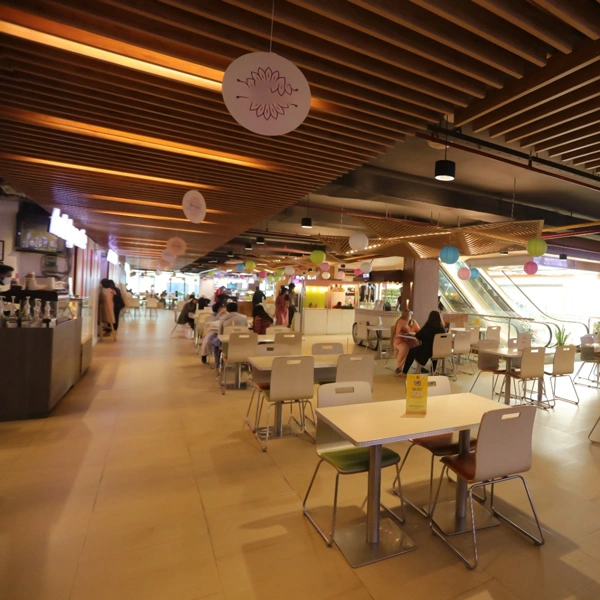
Explore the best Hotel Interior Services at Design 2morrow
Design 2morrow creates sensory-pleasing culinary havens in addition to designing Hotels. Our dedication to providing settings that enhance dining experiences, attention to detail, and innovation is reflected in our Hotel Interior Service. Once we’re done, the design of your Hotel will resemble a work of art. Of course, your budget limitation is crucial in this situation. But we’ll make sure it draws visitors and helps your company grow.
Hotel Interior Design Gallery
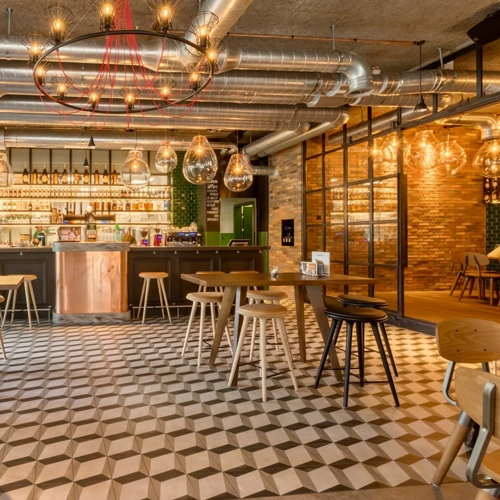
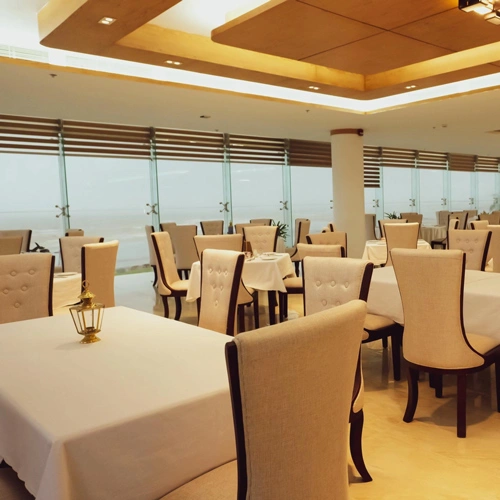
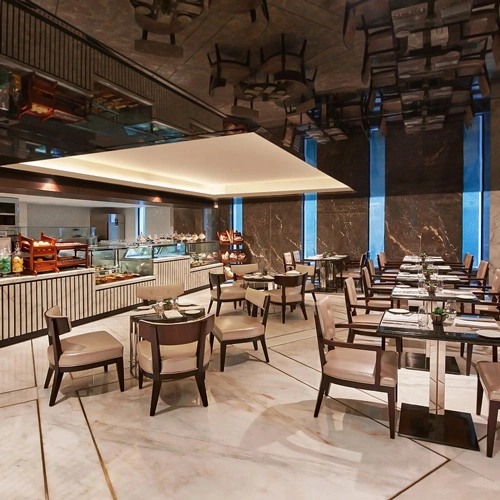
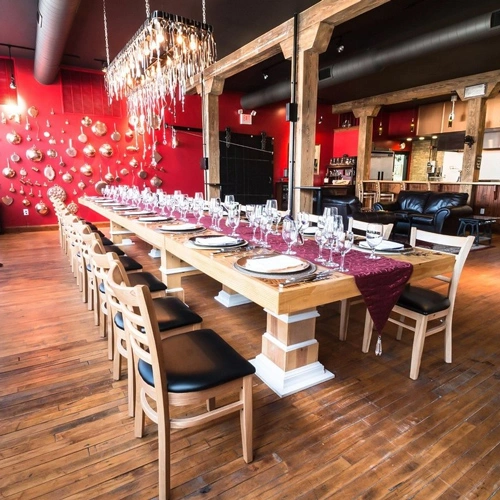

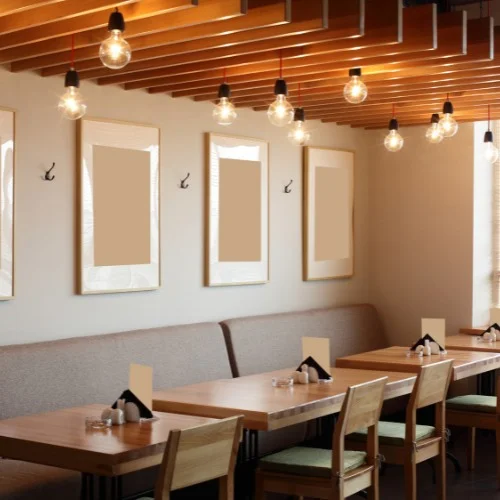
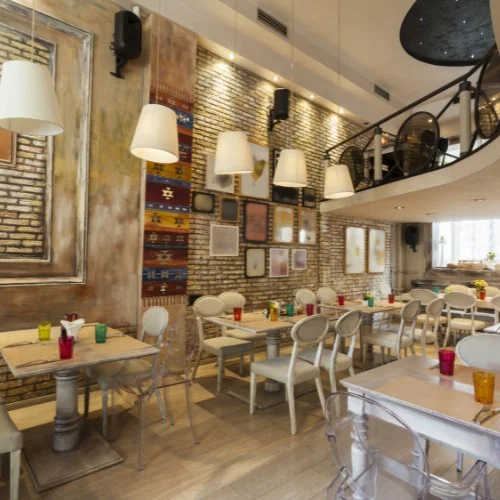
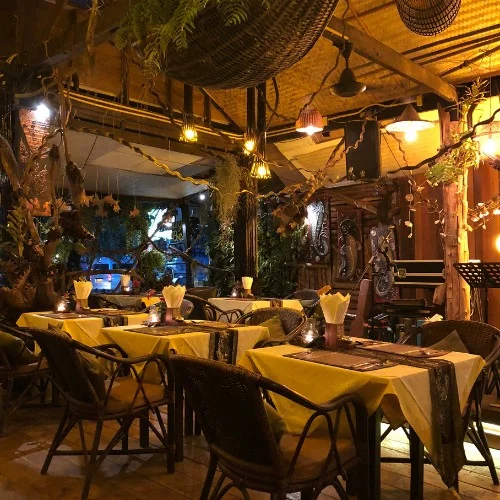
Why Choose Us?
- We are extremely experienced in Hotel interior design, working across diverse cuisines and themes.
- Our design creates an immersive dining experience that harmonizes with your menu.
- We incorporate innovative design solutions that ensure your Hotel is always up to trend
- We uphold the highest level of craftsmanship, from materials to execution.
- Our project management ensures that we finish our work promptly.
- We maintain transparent communication, involve you in decisions, and address your concerns promptly.
With the help of Design 2morrow‘s Hotel interior service, elevate your dining experience. To start the process of making your Hotel into a sensory masterpiece, get in touch with us right away. We are here to make your eating experience extraordinary as it awaits you.
FAQ about hotel interior design:
-
What is hotel interior design?Hotel interior design focuses on creating functional, aesthetic, and comfortable environments within hotel spaces. It considers various elements, such as:
• Mood and ambiance
• Guest comfort
• Brand identity -
Why is interior design important for hotels?The interior design of a hotel plays a crucial role in:
• Guest experience: A well-designed space enhances comfort and satisfaction.
• Brand perception: Unique and cohesive design reflects the hotel's identity.
• Operational efficiency: A functional layout can improve staff productivity. -
What are the key elements of hotel interior design?The key elements include:
Element Description Theme A cohesive style that reflects the hotel’s identity. Color Palette Colors that evoke emotions and impact guest experience. Furniture & Layout Comfortable and functional pieces arranged effectively. Lighting Ambient, task, and accent lighting to create mood. Materials & Textures Choices that resonate with the design theme and are durable.
-
How do I choose a style for my hotel?To choose a style, consider:
• Target market: Understand the preferences of your guests.
• Location: Integrate local culture and context.
• Brand identity: Ensure design aligns with brand values and positioning. -
What is the role of lighting in hotel interior design?Lighting is vital; it:
• Enhances ambiance: Sets the mood of a space.
• Highlights features: Accentuates architectural details and decor.
• Improves functionality: Provides adequate light for tasks. -
How can I ensure my hotel stands out through its interior design?To make your hotel unique:
• Incorporate local elements: Use local art, materials, or themes.
• Focus on guest experience: Design with comfort and convenience in mind.
• Stay current with trends: Blend contemporary trends with timeless design.
Design 2morrow
Typically replies within minutes
আসসালামু আলাইকুম,
আপনার প্রয়োজণীয় তথ্য জানার জন্য ফোন করুন,
☎️ +8801870720555, অথবা- ভিজিট করুন আমাদের ওয়েবসাইট-
🌍 www.design2morrow.com
ধন্যবাদ
Design 2morrow | Interior Design Company
Hotel Interior Design?
WhatsApp Us
🟢 Online | Privacy policy
WhatsApp us
